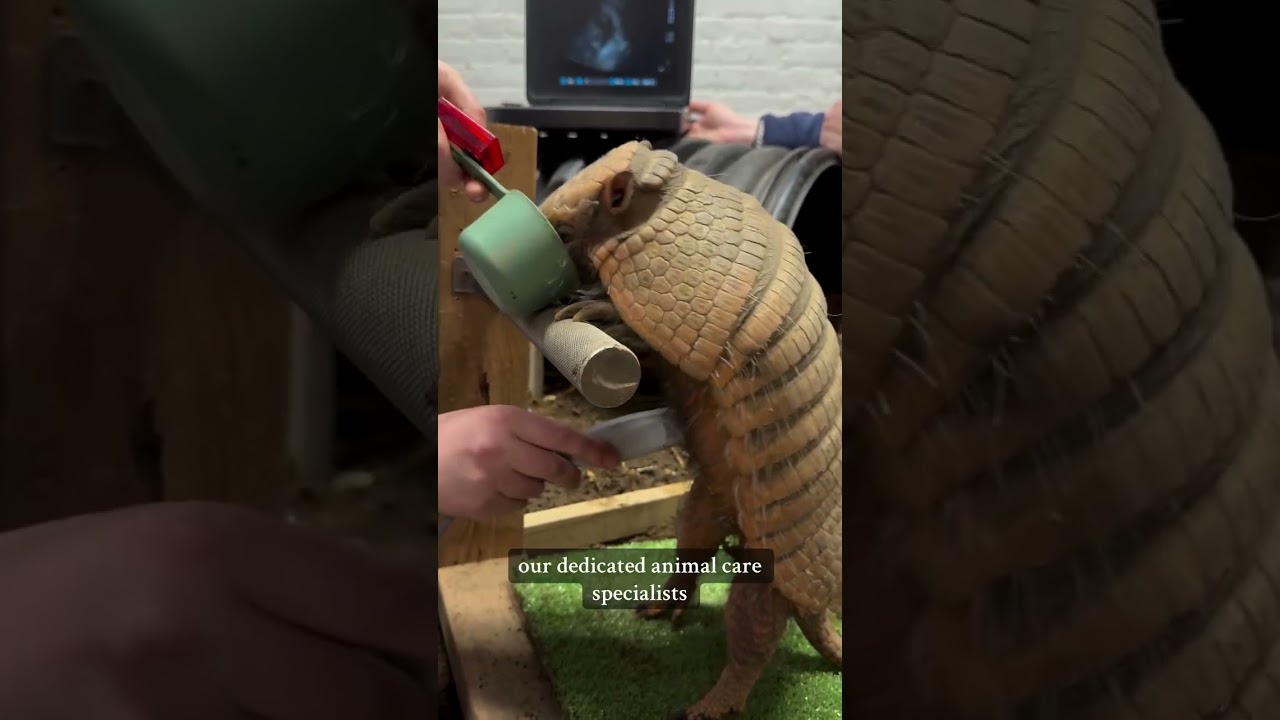- Josephine’s pregnancy and the biological marvels of armadillo reproduction.
- The role of six-banded armadillos in biodiversity conservation.
- Importance of responsible zoo management and wildlife conservation efforts.
- Understanding the six-banded armadillo’s habitat and ecological role.
- The impact of public awareness and engagement in wildlife protection.
Josephine, a six-banded armadillo residing in our care, is currently experiencing a momentous phase in her life—she’s pregnant. The news of this impending addition is an exciting chapter not only in Josephine’s life but also for those of us engaged in zoology, zoo management, and wildlife conservation. As we delve into this period, we’ll explore the biological intricacies of armadillo reproduction, the significant role that species like the six-banded armadillo play in biodiversity, and the efforts needed to ensure their protection in the wild.
Armadillo reproduction is a fascinating process. The six-banded armadillo, scientifically known as Euphractus sexcinctus, is unique among mammals due to its reproductive adaptations. The gestation period in these creatures typically lasts between 61 to 120 days, leading to the birth of a single pup. Interestingly, armadillos are known for their phenomenon of delayed implantation. This biological strategy allows female armadillos to pause the development of the fertilized egg, adapting the timing of birth for optimal environmental conditions. It emphasizes the evolutionary adaptability and resilience of armadillos to their habitats.
Beyond reproduction, six-banded armadillos are pivotal to maintaining biodiversity within their habitats. They are considered ecosystem engineers; through their burrowing activities, they help aerate the soil, promoting plant growth and facilitating nutrient cycling. Such behaviors enhance the habitat for other organisms and aid in the prevention of soil erosion. Their diet, largely consisting of insects and small invertebrates, helps control pest populations, contributing to their ecological niche. Recognizing the armadillo’s role in biodiversity is crucial as it highlights the interconnectedness of life and the necessity to conserve such species.
At our zoo, responsible management practices are at the forefront of what we do. The importance of providing proper care and suitable environments for animals like Josephine cannot be overstated. Ensuring that zoo inhabitants live in conditions that mimic their natural habitat as closely as possible is essential for their well-being and successful breeding. Controlled environments allow us to study their behaviors, health, and breeding patterns meticulously, contributing valuable data to conservation efforts. Our role extends beyond the confines of enclosures; it includes education, research, and actively participating in in-situ conservation initiatives to protect the species in their natural environments.
Protecting the habitats where six-banded armadillos and other wildlife thrive is crucial for biodiversity conservation. These creatures are native to South America, primarily inhabiting grasslands and forests. However, habitat destruction due to agricultural expansion and urban development poses significant threats to their survival. Collaborative conservation efforts such as habitat restoration, legal protection measures, and community engagement are vital to ensure these environments remain viable for posterity.
Public awareness and engagement are instrumental in wildlife conservation. Educating visitors about the significance of species like the six-banded armadillo fosters a deeper connection and appreciation for biodiversity. Through initiatives such as interactive exhibits, educational programs, and digital content, we strive to inspire our audience to value and participate in conservation efforts. Public involvement can take many forms, from simple acts like recycling to supporting local conservation projects or participating in citizen science. Engaged and informed individuals are more likely to advocate for policies and practices that protect wildlife and their habitats.
Throughout Josephine’s pregnancy and beyond, our commitment to advancing knowledge in zoology and wildlife care remains steadfast. By shining a light on the wonders of the six-banded armadillo and emphasizing their ecological significance, we fortify our resolve to champion the cause of animal care and environmental stewardship. Josephine’s journey is one shared by all those who cherish the natural world and understand the intricate balance that sustains life on Earth. Through ongoing research, community involvement, and steadfast conservation efforts, we continue to contribute to the enduring legacy of preserving wildlife for future generations.
*****
Source Description


